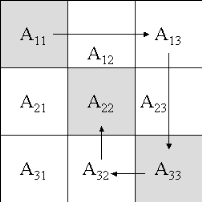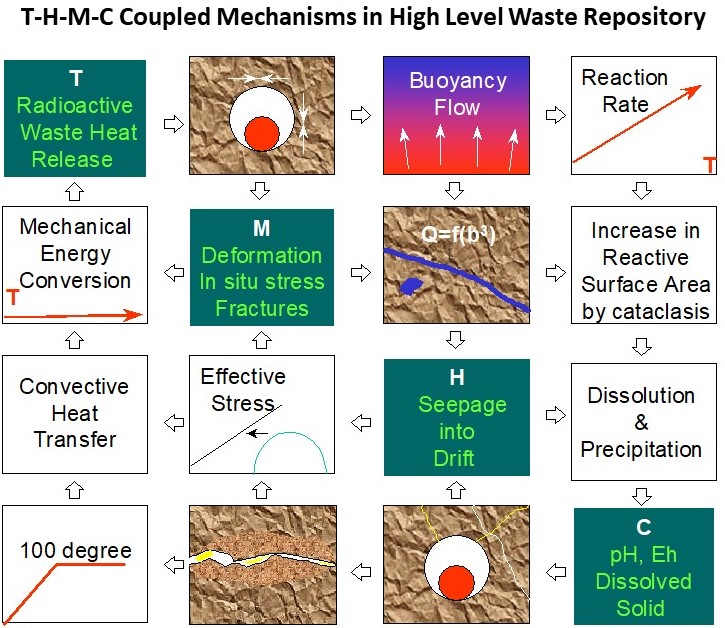HLW
Project
|
For
the safe disposal of high-level nuclear waste (HLW), it is
required to understand the mechanism of Thermal-Hydrological-Mechanical-Chemical
(T-H-M-C) coupling in the area nearby the deposition holes
with or without buffer material.
Due
to the long term thermal inputs generated by decay heat from
the spent fuel, the development and implementation of coupled
mechanisms in HLW project may not be neglected since the failure
mechanisms of the waste package are all interrelated in terms
of T, H, M, and C.
 The
total systems approach based on N2 diagram (or Rock Engineering
System, Hudson, 1992) may be considered to identify the coupled
interactions to be incorporated in the modeling of near field
environment of the emplaced HLW canister. The N2 diagram or
interaction matrix has been frequently used in the field of
systems engineering to help identify the interactions or interfaces
between major factors from systems perspective. The
total systems approach based on N2 diagram (or Rock Engineering
System, Hudson, 1992) may be considered to identify the coupled
interactions to be incorporated in the modeling of near field
environment of the emplaced HLW canister. The N2 diagram or
interaction matrix has been frequently used in the field of
systems engineering to help identify the interactions or interfaces
between major factors from systems perspective.
The
N x N interaction matrix consists of N leading diagonal components
and N2-N off-diagonal components. The leading diagonal
components, Aii, represent the parameter of the
system to be investigated. The off-diagonal component, Aij,
represents the interface (or impact) of the parameter Aii
on Aij and sometimes called as the one-way interaction
component. The interaction matrix is not usually symmetric
since interaction Aij is not always same as Aji
under the normal situation. Once the diagonal parameters,
Aii, are set, then the N2 diagram forces us to
consider each interaction component, Aij, to complete
the matrix. Therefore, the interaction matrix can be used
as a thinking tool to construct a system using parameters
and interactions between those parameters.

|
|
International
Coupled Mechanism Collaboration
|
|
The
FEBEX project has the dual objective of demonstrating
the feasibility of actually manufacturing and assembling
an engineered barrier system and of developing methodologies
and models for assessment of the thermo-hydro-mechanical
(T-H-M) and thermo-hydro-chemical (T-H-C) behavior within
the engineered barrier system (near field).
Decovalex-2023 Project
A
continuation of the multidisciplinary interactive and
cooperative research effort in modeling Thermo-Hydro-Mechanical
(T-H-M) processes in fractured rocks and buffer materials
|
|